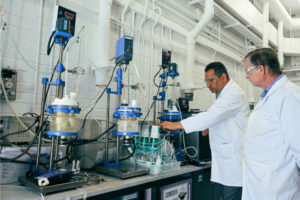From ancient civilizations to modern explorers, in this article we’ll uncover Psilocybe mexicana, a particular psilocybin mushroom species that has captivated minds for centuries.
We’ll also unravel the mystical psychoactive effects, foraging insights, legality, and expert tips for those curious about growing and experiencing the magic of Psilocybe mexicana firsthand.
Psilocybe mexicana Timeline – Historical & Cultural Significance
Psilocybe mexicana (P. Mexicana) – or “Mexican mushrooms” – have a long and storied history, deeply rooted in ancient Mesoamerican cultures. Psilocybe mexicana was the first mushroom species from which psilocybin was extracted by scientists, lending the mushrooms remarkable cultural significance in today’s psychedelic renaissance.
It’s believed hallucinogens played an essential role in traditional Mesoamerican spiritual belief systems. Ancient civilizations, such as the Olmec, Zapotec, Maya, and Aztecs, all believed in spiritual dimensions beyond the physical realm. Consuming psychoactive plants and fungi such as P. Mexicana may have facilitated visionary and mystical experiences that acted as portals between the physical and these spiritual worlds.
Ancient mushroom stones in Guatemala
Dating back 3,000 years, the Guatemalan mushroom stones depict God-shaped figures with mushroom caps on their head. Scholars have suggested these artifacts denote the religious use of native Central American mushrooms, such as Psilocybe mexicana.
They’ve also proposed that the nine identified stone figures could represent the nine lords of the night and gods of the underworld from ancient Mayan beliefs.
These mushroom stones were discovered in the Maya ruins of Kaminaljuyu in Guatemala. They were used 2500 years ago to prepare mixtures of psychedelic mushrooms for ceremonial use. Image source.
Identifying the mysterious Teonanácatl (aka “sacred mushroom”)
Teonanácatl translates as “sacred mushroom” or “flesh of the Gods” in Nahuatl, the language of the Aztecs. In the 16th century, Spanish conquistadors documented the ceremonial use of Teonanácatl in social and festival occasions.
The famous chronicle “Historia General de las Cosas de Nueva España,” written by missionary Bernardino de Sahagún, describes intoxicating mushroom ceremonies and Aztec witch doctors and fortune tellers using the mushrooms as a tool to identify and treat disease.
R. Gordon Wasson, an ethnomycologist studying the role of fungi in human cultures, sought to confirm the existence of Teonanácatl in the 1950s. In 1953, he traveled to the Mexican town Huautla de Jiménez, in Northern Oaxaca, along with his wife, Valentina Pavlovna Wasson, and anthropologist Robert Weitlaner. Here, they collected psychoactive mushroom specimens used in a divination ceremony amongst the Mazatec people in a Catholic-based religious group native to Huautla.
The samples corresponded to four different mushroom species:
Mycologist Roger Heim received these samples at the Musée National d’Histoire Naturelle in Paris and cultivated the first Western growth of Psilocybe mexicana in 1954.
Seeking the Magic Mushroom
Wasson returned to Huautla and participated in a secret mushroom ceremony facilitated by the healer Maria Sabina in 1955. He published his experience two years later in Life Magazine, titled “Seeking the Magic Mushroom,” spurring a wave of foreign tourists arriving in Huautla seeking to experience the effects of psilocybin mushrooms for themselves.
Mushroom tourism in the town stimulated a new mushroom trade in the region and growing use of non-traditional use among tourists. Sabina was ousted from Huautla by her local community as a result.
Synthesizing psilocybin from P. mexicana
From Heim’s sample of P. mexicana, the Swiss Chemist Albert Hoffman isolated and named the active psychedelic compounds psilocybin and psilocin in 1958. Hoffman had discovered the psychedelic properties of LSD fifteen years earlier, and his laboratories at Sandoz had been researching the effects and clinical potential of psychedelic experiences since.
Psilocybin pills, under the name Indocybin, were produced by Hoffman’s laboratory during the 1960s and used by iconic psychedelic researchers, such as Timothy Leary, in various experiments.
Psilocybe mexicana was the first mushroom species from which psilocybin was extracted by scientists, lending the mushrooms remarkable cultural significance in today’s psychedelic renaissance.


